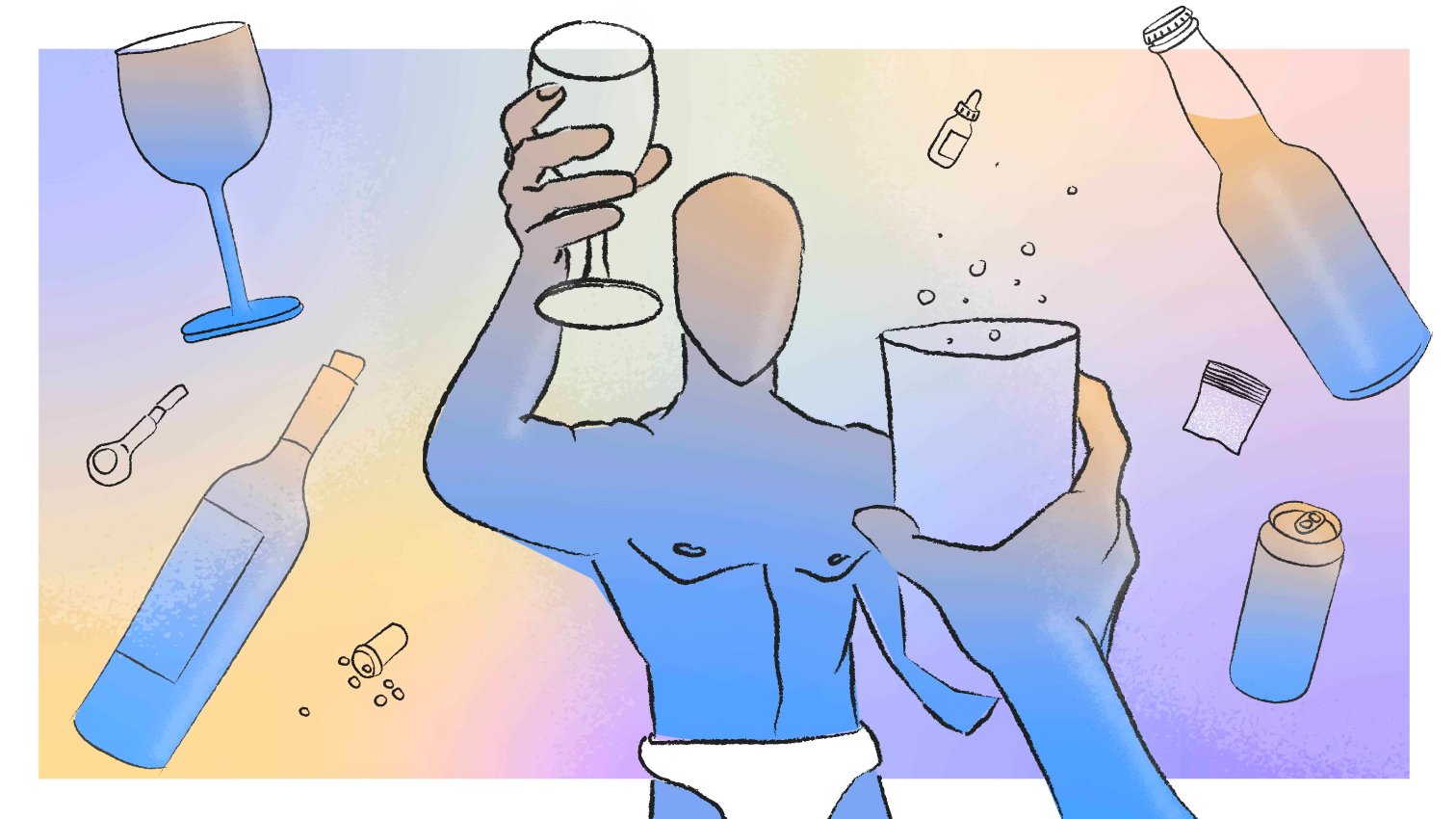
Quick facts 
🍺 Alcohol is a legal substance found in beverages like beer, wine, and spirits. It is one of the most widely used and accepted drugs in the world
⬇️ Alcohol is a “depressant” drug that produces relaxing and euphoric effects
What is it?
Alcohol in beverages typically refers to ethanol (ethyl alcohol), a psychoactive substance that is the main component of alcoholic drinks. It is produced through the fermentation of sugars by yeast and is responsible for the intoxicating effects of drinks like beer, wine, and spirits.
Alcohol affects the central nervous system and can cause both stimulation and sedation depending on how much one drinks and individual tolerance levels.
What does it look like?
Common types of alcoholic beverages include:
- Beer: A fermented drink with a low alcohol content, usually 4-6% alcohol
- Wine: A fermented drink made from grapes with an alcohol content of 12-15%
- Spirits: Distilled drinks like vodka, whiskey, and rum, with a higher alcohol content of 40% or more
Alcohol often has labels that provide information about the number of units in the drink. A unit is a way to express the actual amount of pure alcohol in a beverage, allowing for comparisons of strength between different types of drinks. This can also make it easier to understand how many units one is consuming.
How is it consumed?
Alcohol is typically consumed by drinking:
- Beer, wine, and spirits are often drunk from glasses, cans, or bottles
- Alcohol can also be mixed into cocktails or other beverages
- Spirits can be taken as a ‘shot.’
- Ready-to-drink mixers and alcopops are becoming increasingly popular; they may not seem strong but often contain more alcohol than typical bottles of cider or beer
How does it feel?
The effects of alcohol can vary depending on the dose and individual tolerance. Users may experience:
- Euphoria and increased confidence
- Relaxation and reduced anxiety
- Impaired judgment and coordination
- Decreased motor skills and reaction time
- Drowsiness at higher doses
Alcohol and sex
Alcohol is often used to reduce inhibitions and enhance social interaction, which can influence sexual behavior. Losing inhibitions may lead people to take risks they normally wouldn’t, such as not using condoms or engaging in activities they might otherwise avoid. It can also impair sexual performance, making it harder to achieve or maintain an erection.
Safer sex with alcohol:
- Communicate clearly with your partner about consent and boundaries
- Be cautious with mixing substances, as alcohol can negatively interact with many other drugs
- Ensure you have everything you need, such as condoms, lubricants, gloves, and cleaning supplies for sex toys
- If using condoms during sex, remember to change them every 30 minutes to prevent wear and tear
- Consider limiting your alcohol intake if it negatively affects your sex life
Side effects and Long-term Consequences
Alcohol can have both short-term and long-term side effects:
Short-term effects: Dizziness, headache, nausea, vomiting, blackouts
Long-term effects: Liver damage, heart problems, dependence, mental health issues like depression and anxiety, chronic diseases such as cancer
Managing an overdose
Alcohol poisoning, also known as alcohol intoxication, can be life-threatening and requires immediate medical attention. Signs of an overdose include:
- Confusion and unconsciousness
- Vomiting
- Irregular breathing
- Hypothermia (low body temperature)
- Cyanosis (bluish skin color)
If you suspect an overdose:
- Call an ambulance immediately (112 in Sweden and the rest of the EU)
- Keep the person awake and sitting up if possible, ensuring they are not in a position that could block their airways
- Place the person in the recovery position if they are unconscious but breathing
⛓️ Risk of addiction
⚠️ Alcohol has a high risk for both physical and psychological dependence. Long-term use can lead to alcohol addiction, where larger amounts are needed to achieve the same effect, and withdrawal symptoms occur upon cessation
Alcohol and other drugs
Combining alcohol with other drugs can be extremely dangerous:
- Benzodiazepines and alcohol increase the risk of respiratory depression and death
- Opioids and alcohol enhance the sedative effects, leading to overdose
- Stimulants
(such as amphetamines, methamphetamines, mephedrone, and MDMA/ecstasy) can mask the effects of alcohol, raising the risk of overdose
Always exercise caution and be aware of the potential dangers when mixing substances
Alcohol and HIV-treatment (ART)
Alcohol can negatively affect the immune system and complicate adherence to HIV medication. Long-term alcohol consumption may also lead to forgetting to take medication regularly.
🕐 Take your HIV medications consistently. Set an alarm or reminder on your phone if needed. Use substances and HIV medications at different times to reduce the risk of side effects. Use low doses of substances when taking medications simultaneously.
🗣️ Talk to your doctor or an expert about interactions between HIV medication and alcohol.


